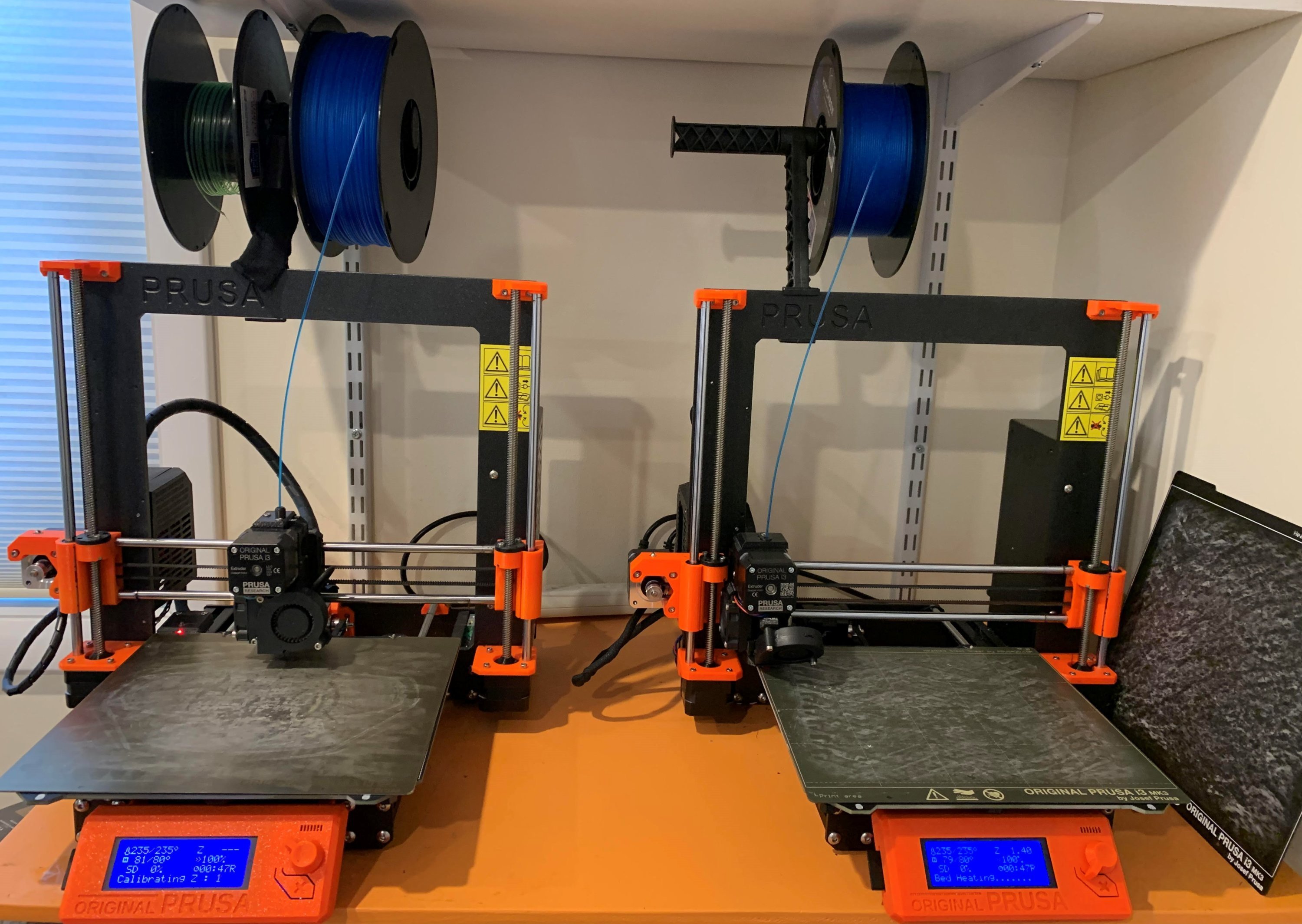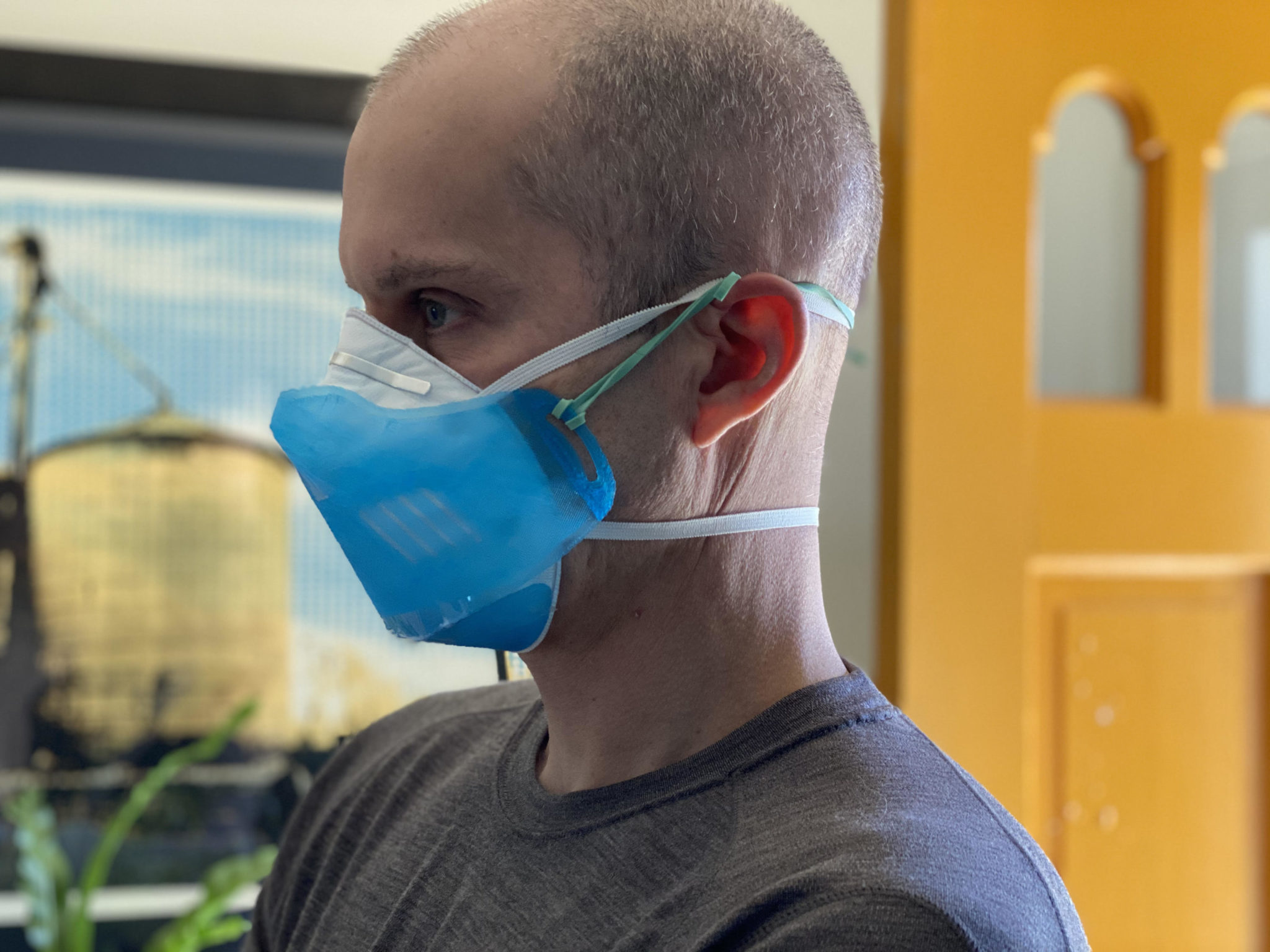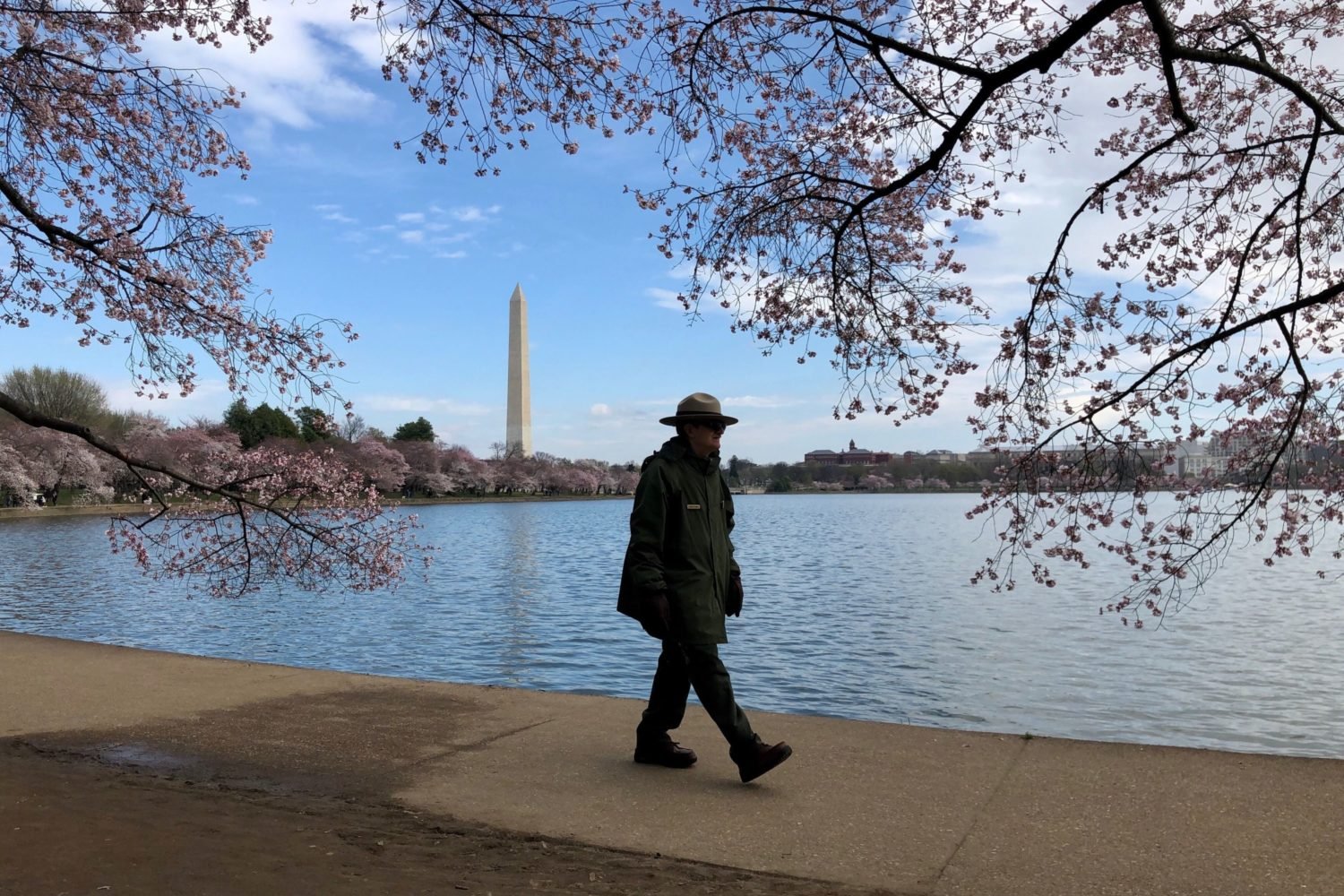About Coronavirus 2020
Washingtonian is keeping you up to date on the coronavirus around DC.
As protective gear shortages put our frontline medical workers at risk, Vienna couple Amy and Jeremy Filko are 3D-printing shields to protect N95 masks. For each request received, the Filkos are covering shipping costs and sending four free masks to doctors, nurses, and other healthcare workers.
Three years ago, curiosity drove Jeremy, a data scientist for a federal contractor, to experiment with 3D printing, and he started making containers and other plasticware. But a conversation last week with an anesthesiologist friend inspired Jeremy to turn his hobby into an aid effort.
Typically, an N95 mask is worn once and then disposed. But amid shortages, the anesthesiologist told Jeremy that medical workers are being instructed to recycle their masks for upwards of five days.
Immediately, Amy and Jeremy began brainstorming how to help. Producing the N95 masks themselves requires rigorous testing, so Jeremy opted to create a shield on his two 3D printers to protect the masks from splatter.
By Friday, he had created a prototype. Each shield is printed layer by layer and made from ABS plastic, a common type. One shield weigh seven grams and costs around 10 cents to produce.

The printers are currently running 24/7, churning out a new shield every 38 minutes. To avoid losing precious production time, Amy and Jeremy are rotating shifts throughout the night to manually reload the printers.
They’ve already made around 40 shields, and the goal is to increase production numbers by sharing the file with other 3D printers. One caveat: “Anybody that we give a design to, we’re telling them do not charge. It needs to be free and given to providers free,” says Jeremy.
More printers also means more feedback for a refined design. After delivering early batches to friends in the medical field, Jeremy integrated their comments into a new design with air vents and a wider shield.
To submit a request for shields or 3D printing files, Amy, who works in communications for a federal contractor, recommends reaching out via the Facebook page she created.
“Anything that we can do to keep those masks viable longer will assist until production and distribution of the masks and filters can catch up,” says Jeremy. “The sooner the shields are made irrelevant, the happier I’m going to be.”



















